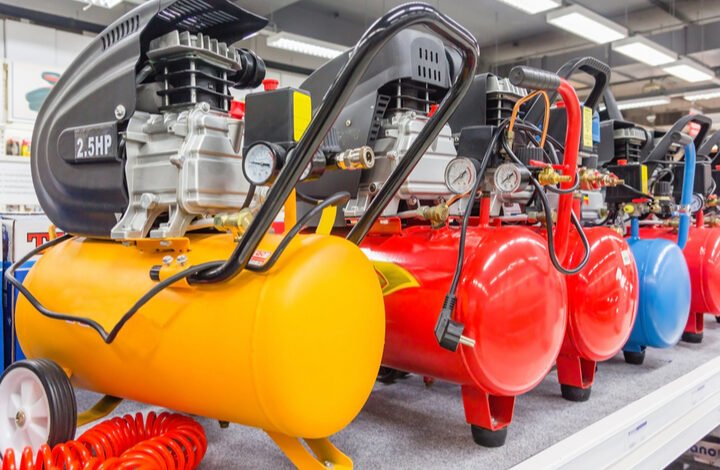From Pressure to Production: How Air Compressors Fuel the Factory Floor

Key Takeaways
- Industrial air compressors are essential to numerous manufacturing processes, powering a wide range of equipment, including automation systems and packaging lines.
- Energy efficiency, careful maintenance, and awareness of emerging technologies are essential for optimizing air compressor systems.
- Sustainability trends and research are ushering in new opportunities for cleaner, more cost-effective production.
- Understanding compressor technologies allows manufacturers to make informed, future-ready investments in production assets.
- Best practices and up-to-date resources, including sustainable trends, are essential for competitive manufacturing.
What Makes Industrial Air Compressors Essential in Manufacturing?
On modern production floors, compressed air flows through pipes, powering machinery and tools. It operates conveyor belts, actuates robotic arms, and maintains assembly line precision. While utilities like electricity and water are visible, compressed air works behind the scenes, providing force for tasks such as equipment cleaning and motion control. The importance of industrial air compressors is immense.
In both large automotive facilities and smaller electronics plants, compressed air is a vital resource. The industry is seeing a trend toward smarter, more dependable equipment, as reflected in resources and guides available through platforms like https://cbeuptime.com/gardner-denver/. Research from industry groups reveals that unplanned downtime resulting from compressor failure can disrupt production for hours or days, underscoring the strategic importance of reliable compressed air solutions in minimizing risk and maximizing productivity.
Common Applications: Beyond The Obvious
Air compressors extend beyond simple tools and tire pumps to significant industrial applications. Automation relies on pneumatic actuators for precise product assembly, item movement, and machine control. In the pharmaceutical industry, compressed air plays a vital role in processes such as mixing, capsule filling, and sterile packaging. The food and beverage industry requires oil-free air for bottling, packaging, and aeration, ensuring compliance with safety regulations. Electronics manufacturers utilize compressed air to maintain static-free and dust-free environments during circuit assembly. In the automotive industry, it powers spray booths for high-quality paint jobs and operates lifts, wrenches, and robotic welders. This versatility enhances productivity and enables rapid adaptation to shifting production demands through automated updates and expanded networks.
Types Of Compressors: Choosing The Right Fit
Industrial air compressors vary based on operational goals. Reciprocating compressors provide high-pressure air pulses, making them ideal for intermittent, high-force tasks in smaller settings. Their simple design allows for repairs and consistent output in less demanding environments.
Rotary screw compressors excel in continuous air delivery and efficiency, making them ideal for 24/7 operation in processes such as metal fabrication and packaging. Centrifugal compressors generate large volumes of compressed air using high-speed impellers, favored in facilities like refineries and steel mills. Each type involves trade-offs in efficiency, cost, noise, and maintenance, necessitating manufacturers to collaborate with suppliers and seek application-specific guidance for upgrades or new installations.
Energy Consumption And Efficiency Considerations
Managing energy costs is crucial for industrial operators, as compressed air systems are often known for their hidden inefficiencies. These systems can account for over 10% of a facility’s energy use, leading to significant annual utility expenses. Key inefficiency factors include oversized compressors, improper pressure regulation, and leaks in the piping network. Regular audits and upgrading to modern controls, such as variable speed drives, yield measurable returns. Case studies show that leak detection and correction can reduce energy waste by up to 30%. According to this resource on managing energy costs, investing in efficient compressors and smart controls allows sustainable factory operation while providing considerable cost savings for reinvestment.
Maintenance: The Secret To Longevity
An industrial air compressor should last over a decade if maintained properly. Prevention is key: facilities that schedule regular checks—inspecting filters, monitoring oil and coolant levels, tightening connections, and listening for unusual sounds—identify small issues before they lead to costly downtime. Neglecting minor tasks, like draining condensation or replacing intake filters, can compromise system reliability and efficiency.
- Weekly: Inspect for leaks, vibrations, and noise
- Monthly: Drain moisture traps, change air intake filters, verify system pressure
- Quarterly: Inspect belts, clean coolers, check safety systems, analyze data
- Annually: Full inspection and calibration of safety controls
This strategy not only prolongs compressor life but also reduces operational costs and ensures a safe workplace. Many facilities view maintenance as an investment, not an expense.
Embracing Sustainability In Compressed Air Operations
Industrial sustainability often starts with energy savings, but compressed air systems offer broader benefits. Many manufacturers utilize monitoring tools to optimize compressor run times, reduce idling, and recover waste heat, thereby reducing natural gas consumption by repurposing thermal energy, enhancing compressor efficiency through heat recovery solutions, and switching to oil-free systems with lower energy costs, greenhouse gas emissions, and operational risks.
Facilities can consult those that focus on leaders and publications related to sustainable manufacturing using compressed air. Merging best practices with investments in energy-efficient technologies allows organizations to comply with environmental, social, and governance (ESG) mandates and local regulations.
Best Practices For Implementing Compressed Air Solutions
- Initiate energy and air usage audits to benchmark system needs and identify improvement areas.
- Collaborate with experienced system integrators to optimize compressor sizing, preventing overcapacity and associated energy waste.
- Establish rapid response plans for leaks, including regular walkthroughs with ultrasonic detection tools, to ensure prompt detection and mitigation of leaks.
- Plan preventive maintenance, maintain detailed logs, and review system data to optimize ongoing performance.
- Invest in workforce training to ensure all operators understand the importance of efficient compressed air usage and system safety.
By integrating these habits into day-to-day operations, manufacturers can achieve uninterrupted production, lower costs, and a safer workplace for all employees.
The Road Ahead: Innovation And Trends
The future of compressed air in manufacturing focuses on integrating digital monitoring, automation, and sustainability. Advanced compressors utilize machine learning and cloud analytics for predictive maintenance, minimizing disruptions. Evolving designs aim for higher efficiency and compatibility with facility management software. Keeping up with industry advancements enables manufacturers to adapt to challenges and maintain cost-effective operations quickly.
